Mike Phillips
Active member
- Dec 5, 2022
- 51,004
- 6
The #7 Rub Down Technique by Mike Phillips

The #7 Rub Down Technique
This is where you rub the paint down BY HAND using an extra heavy or wet application of the polishing oils found in the #7 Show Car Glaze. You also use old-fashioned cotton, terrycloth wash cloths to apply and work the #7 over and into the paint.
Here's how...
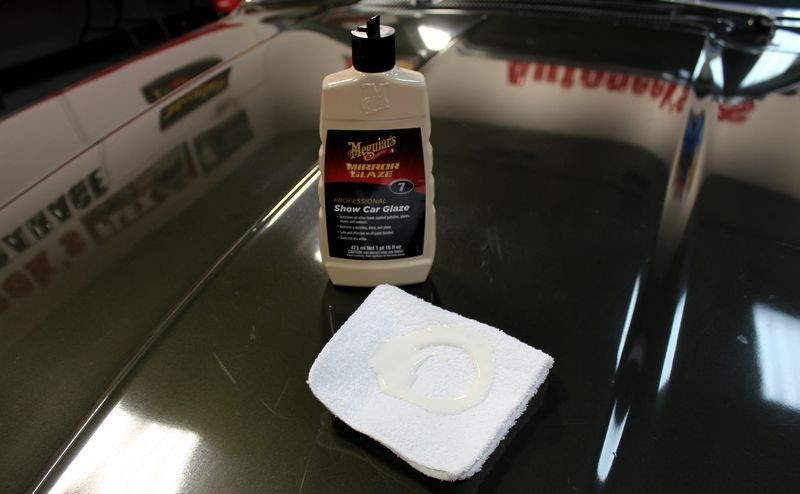
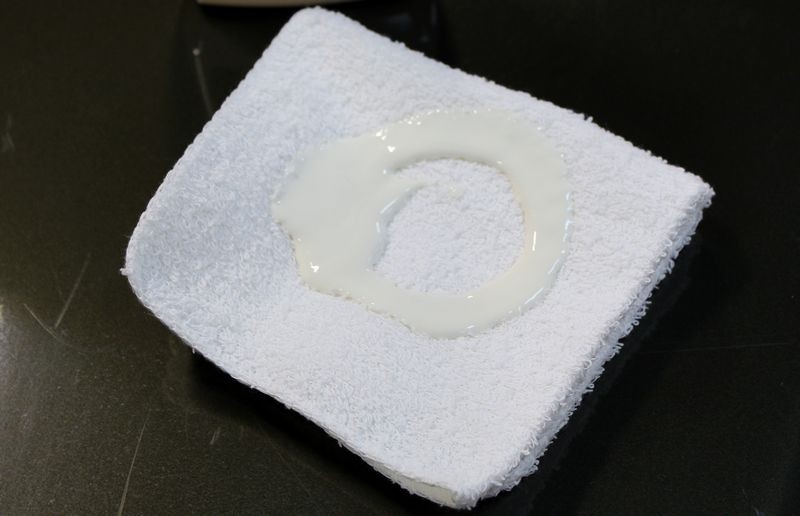


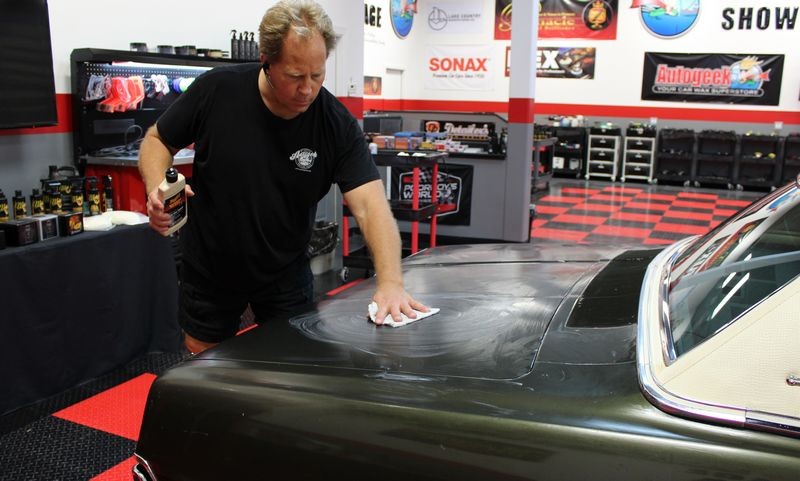
#7 Soaking Step
After you apply and work the #7 over the paint the next thing you do is wait. You want to give the oils time to migrate via capillary action into the old, dry brittle paint. I try to leave the heavy coat of #7 on over night when that fits my schedule. If not over night then start first thing in the morning and let the #7 oils soak as long as you can.
46-year old single stage paint soaking in heavy coat of #7 Show Car Glaze




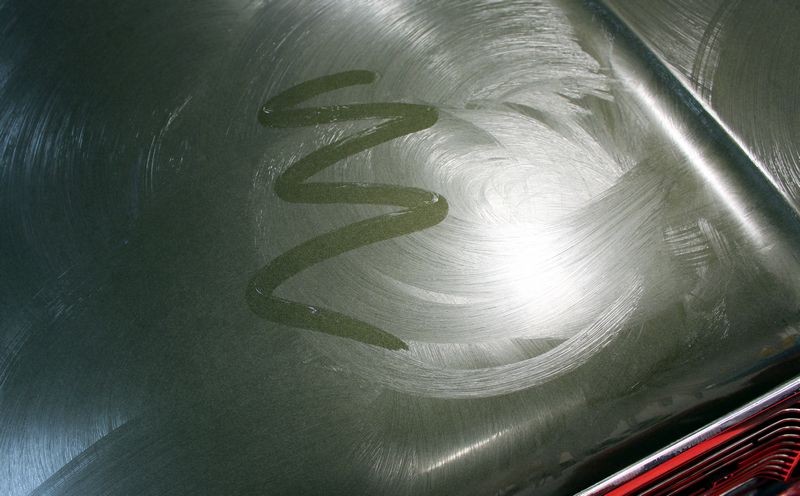
Removal
After allowing the oils in the #7 Show Car Glaze to soak over night or for a few hours, then remove the heavy application of #7 using cotton terry cloth towels.
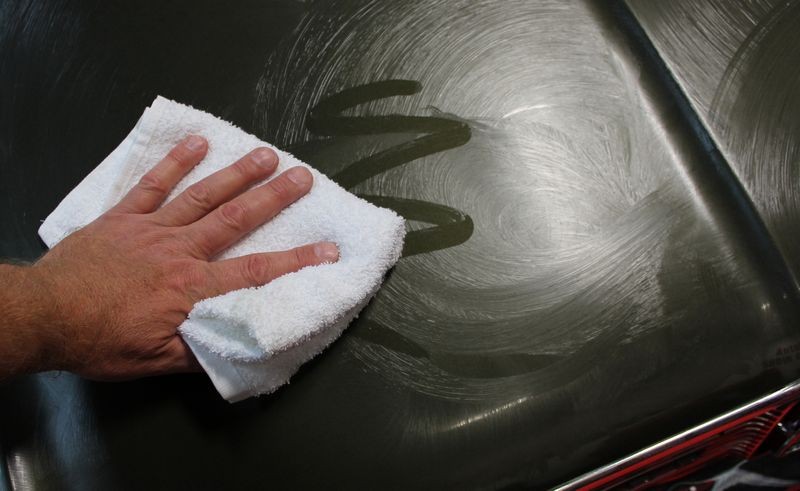



How it works
As I show in the pictures of the original article, (the pictures of the sheet of paper with a drop of #7 on it), because single stage paints are porous (clearcoat paints are NOT porous), the trade secret or TS oils found in the Meguiar’s #7 will migrate INTO the paint and in simple words, revitalize the paint and bring it back to life. These oils will bring out the full richness of color and make old, dried out brittle paint safer to work on. By safe to work on I mean to do things like compound and polish the paint. It’s up to you, but if the paint is important to you then like me, I prefer to do everything I can to preserve the original paint and that means to rub it down with the #7 and let the #7 soak in over night before doing any abrading like compounding or polishing. Again, see my original article and what I say about the word important.
How to apply the #7
Everyone knows I’m a machine guy. I don’t do anything by hand if I can do it by machine. Except rubbing down antique single stage paint using Meguiar’s #7. It’s really a case where a machine cannot do a well of a job as the human hand because the human hand is better at massaging the oils over and into the paint than any type of pad will ever do on some type of spinning or oscillating machine. Try if you want and it’s your car and your paint but for me and my projects I go old school and simply keep it simple and apply the #7 by hand.
Cotton terrycloth
Cotton terrycloth toweling or wash cloths are the preferred method for massaging the #7 oils into single stage paint for a couple of reasons,
1. When restoring neglected paint you don’t want a cloth that is soft and gentle to the paint, (microfiber), you want a cloth that is stout and has some substance to it. That would be old school cotton terrycloth.
2. My technique for restoring antique paint that’s important to you includes NOT using abrasives for the initial step. The initial step, (applying #7) is about gorging the paint with oils, not grinding on it. That said, when antique paint has been neglected there will be some level of dead, oxidized paint on the surface and you do want to remove this dead paint. Instead of using abrasives however, cotton terrycloth, because of its stoutness, together with the #7 oils as a lubricant, will gently abrade off the dead paint. Thus the cotton terrycloth IS the abrasive. Fibers are a form of abrasive they are just a gentle version in the form of cotton terrycloth. Thus by using terrycloth with the #7 your remove the dead paint without abrasive and this is important if preserving the original paint is important.
Heavy or wet
Whenever you see me use the terms heavy or wet in the context of applying a liquid it means to apply a LOT of the product. That’s what the terms heavy and wet means, it means applying an ample amount, sufficient to wet the surface or in other words, use a lot of product. The idea being with the #7 to both lubricate the surface as your rub off years of oxidation but to also gorge the paint with oils both during the rubbing portion of the process and the soaking-in portion of the process.
Application
Application is simple. Shake the bottle of #7 up very well first and the pour a lot of it onto a cotton terrycloth wash cloth and then spread it out over a section of paint using overlapping, circular motions. Work and massage the product for a few minutes per section. Apply more #7 if needed to maintain a wet coating of oils on the surface as you work. Some very old and dried out paints will absorb the oils readily so pay attention and add more product as needed.
After you apply to an entire panel move onto the next panel. Repeat till all body panels are coated in a thick layer of oily #7 and the allow the product to set. Overnight is usually preferred but as long as you can and that fits your schedule.
Option – multiple applications of the #7
If you have the time and the paint is very old and dried-out, after the initial application and soaking you can repeat the process 2-3 more times. My experience as is the experience of others I’ve helped to use this product and technique over the years is that for very oxidized, neglected antique single stage paints, 2-3 applications works miracles and in some cases, after wiping off the final application the paint will look brand new again.
Wipe off – back to cotton terrycloth
When you’re ready to remove the thick, oily coat of #7 Show Car Glaze you want to use clean, 100% cotton terrycloth towels. Like the application process, you don’t want a cloth that is soft and gentle you want a cloth that offers some stoutness to it because the #7 is very oily and a tick on the stubborn side to wipe off.
Two comments…
First, the nap of real terrycloth is a loop of fiber. It’s this loop and the cotton material that makes terrycloth.
Second, this tiny loop of fiber, (the nap), helps you to break-up and remove the oily #7 because the loop of fiber when rubbed against the film of #7 will SLICE into the oily layer helping to break it up and to break it’s hold on the paint surface. I dare you to compare wiping a layer of #7 off with real cotton terrycloth towels and microfiber towels and I’m confident you will agree.
90% removal
Don’t worry or even try to remove 100% of the oily film. It’s not important. It’s also a lot of time and work and again… it’s not important. I know most of you reading this when removing anything off paint aim for 100% removal, be it a compound or a wax and while that might be right for all other paint care products it’s simply not important when it comes to remove the #7 because it just isn’t unless after wipe-off you’re 100% done. If you’re going to apply any other product, that is compound, polish and/or a wax, then any trace amounts of the #7 will come off when you wipe off these other products. So relax and just aim for about 90% removal. This is especially true if you’re going to apply a second, third, or fourth application of the #7.
Soaking session
You want to do the the day before so the oils can penetrate into the paint over night. This product has been around since the early days of the automobile. It is non-abrasive and while it's typically used for glazing fresh paint at a body shop or to give single stage paint that wet-look before a car show, for me I use it to bring antique single stage paint back to life.
And that's how you do the #7 rub-down.
Second and third applications
If you're working on paint that is really, really dry and oxidized then if you like, you can repeat the above process multiple times and this will do two things,
1. The cotton terry cloth will act as an abrasive and together with the polishing oils in the #7 will gently remove years and even decades of oxidation. The results are restored paint without having to resort to a physical abrasive like a compound or a polish. A lot of times you can get the paint to look so good that you can forgo the use of any compounds or polishes and simply apply a finishing wax and then stand back and admire the results.
2. Multiple applications will remove dead paint and at the same time push the trade secret polishing oils deeper and deeper into the paint bringing the paint back to life and bringing out the full richness of color.
Hope that helps...

The #7 Rub Down Technique
This is where you rub the paint down BY HAND using an extra heavy or wet application of the polishing oils found in the #7 Show Car Glaze. You also use old-fashioned cotton, terrycloth wash cloths to apply and work the #7 over and into the paint.
Here's how...
#7 Soaking Step
After you apply and work the #7 over the paint the next thing you do is wait. You want to give the oils time to migrate via capillary action into the old, dry brittle paint. I try to leave the heavy coat of #7 on over night when that fits my schedule. If not over night then start first thing in the morning and let the #7 oils soak as long as you can.
46-year old single stage paint soaking in heavy coat of #7 Show Car Glaze
Removal
After allowing the oils in the #7 Show Car Glaze to soak over night or for a few hours, then remove the heavy application of #7 using cotton terry cloth towels.
How it works
As I show in the pictures of the original article, (the pictures of the sheet of paper with a drop of #7 on it), because single stage paints are porous (clearcoat paints are NOT porous), the trade secret or TS oils found in the Meguiar’s #7 will migrate INTO the paint and in simple words, revitalize the paint and bring it back to life. These oils will bring out the full richness of color and make old, dried out brittle paint safer to work on. By safe to work on I mean to do things like compound and polish the paint. It’s up to you, but if the paint is important to you then like me, I prefer to do everything I can to preserve the original paint and that means to rub it down with the #7 and let the #7 soak in over night before doing any abrading like compounding or polishing. Again, see my original article and what I say about the word important.
How to apply the #7
Everyone knows I’m a machine guy. I don’t do anything by hand if I can do it by machine. Except rubbing down antique single stage paint using Meguiar’s #7. It’s really a case where a machine cannot do a well of a job as the human hand because the human hand is better at massaging the oils over and into the paint than any type of pad will ever do on some type of spinning or oscillating machine. Try if you want and it’s your car and your paint but for me and my projects I go old school and simply keep it simple and apply the #7 by hand.
Cotton terrycloth
Cotton terrycloth toweling or wash cloths are the preferred method for massaging the #7 oils into single stage paint for a couple of reasons,
1. When restoring neglected paint you don’t want a cloth that is soft and gentle to the paint, (microfiber), you want a cloth that is stout and has some substance to it. That would be old school cotton terrycloth.
2. My technique for restoring antique paint that’s important to you includes NOT using abrasives for the initial step. The initial step, (applying #7) is about gorging the paint with oils, not grinding on it. That said, when antique paint has been neglected there will be some level of dead, oxidized paint on the surface and you do want to remove this dead paint. Instead of using abrasives however, cotton terrycloth, because of its stoutness, together with the #7 oils as a lubricant, will gently abrade off the dead paint. Thus the cotton terrycloth IS the abrasive. Fibers are a form of abrasive they are just a gentle version in the form of cotton terrycloth. Thus by using terrycloth with the #7 your remove the dead paint without abrasive and this is important if preserving the original paint is important.
Heavy or wet
Whenever you see me use the terms heavy or wet in the context of applying a liquid it means to apply a LOT of the product. That’s what the terms heavy and wet means, it means applying an ample amount, sufficient to wet the surface or in other words, use a lot of product. The idea being with the #7 to both lubricate the surface as your rub off years of oxidation but to also gorge the paint with oils both during the rubbing portion of the process and the soaking-in portion of the process.
Application
Application is simple. Shake the bottle of #7 up very well first and the pour a lot of it onto a cotton terrycloth wash cloth and then spread it out over a section of paint using overlapping, circular motions. Work and massage the product for a few minutes per section. Apply more #7 if needed to maintain a wet coating of oils on the surface as you work. Some very old and dried out paints will absorb the oils readily so pay attention and add more product as needed.
After you apply to an entire panel move onto the next panel. Repeat till all body panels are coated in a thick layer of oily #7 and the allow the product to set. Overnight is usually preferred but as long as you can and that fits your schedule.
Option – multiple applications of the #7
If you have the time and the paint is very old and dried-out, after the initial application and soaking you can repeat the process 2-3 more times. My experience as is the experience of others I’ve helped to use this product and technique over the years is that for very oxidized, neglected antique single stage paints, 2-3 applications works miracles and in some cases, after wiping off the final application the paint will look brand new again.
Wipe off – back to cotton terrycloth
When you’re ready to remove the thick, oily coat of #7 Show Car Glaze you want to use clean, 100% cotton terrycloth towels. Like the application process, you don’t want a cloth that is soft and gentle you want a cloth that offers some stoutness to it because the #7 is very oily and a tick on the stubborn side to wipe off.
Two comments…
First, the nap of real terrycloth is a loop of fiber. It’s this loop and the cotton material that makes terrycloth.
Second, this tiny loop of fiber, (the nap), helps you to break-up and remove the oily #7 because the loop of fiber when rubbed against the film of #7 will SLICE into the oily layer helping to break it up and to break it’s hold on the paint surface. I dare you to compare wiping a layer of #7 off with real cotton terrycloth towels and microfiber towels and I’m confident you will agree.
90% removal
Don’t worry or even try to remove 100% of the oily film. It’s not important. It’s also a lot of time and work and again… it’s not important. I know most of you reading this when removing anything off paint aim for 100% removal, be it a compound or a wax and while that might be right for all other paint care products it’s simply not important when it comes to remove the #7 because it just isn’t unless after wipe-off you’re 100% done. If you’re going to apply any other product, that is compound, polish and/or a wax, then any trace amounts of the #7 will come off when you wipe off these other products. So relax and just aim for about 90% removal. This is especially true if you’re going to apply a second, third, or fourth application of the #7.
Soaking session
You want to do the the day before so the oils can penetrate into the paint over night. This product has been around since the early days of the automobile. It is non-abrasive and while it's typically used for glazing fresh paint at a body shop or to give single stage paint that wet-look before a car show, for me I use it to bring antique single stage paint back to life.
And that's how you do the #7 rub-down.
Second and third applications
If you're working on paint that is really, really dry and oxidized then if you like, you can repeat the above process multiple times and this will do two things,
1. The cotton terry cloth will act as an abrasive and together with the polishing oils in the #7 will gently remove years and even decades of oxidation. The results are restored paint without having to resort to a physical abrasive like a compound or a polish. A lot of times you can get the paint to look so good that you can forgo the use of any compounds or polishes and simply apply a finishing wax and then stand back and admire the results.
2. Multiple applications will remove dead paint and at the same time push the trade secret polishing oils deeper and deeper into the paint bringing the paint back to life and bringing out the full richness of color.
Hope that helps...
